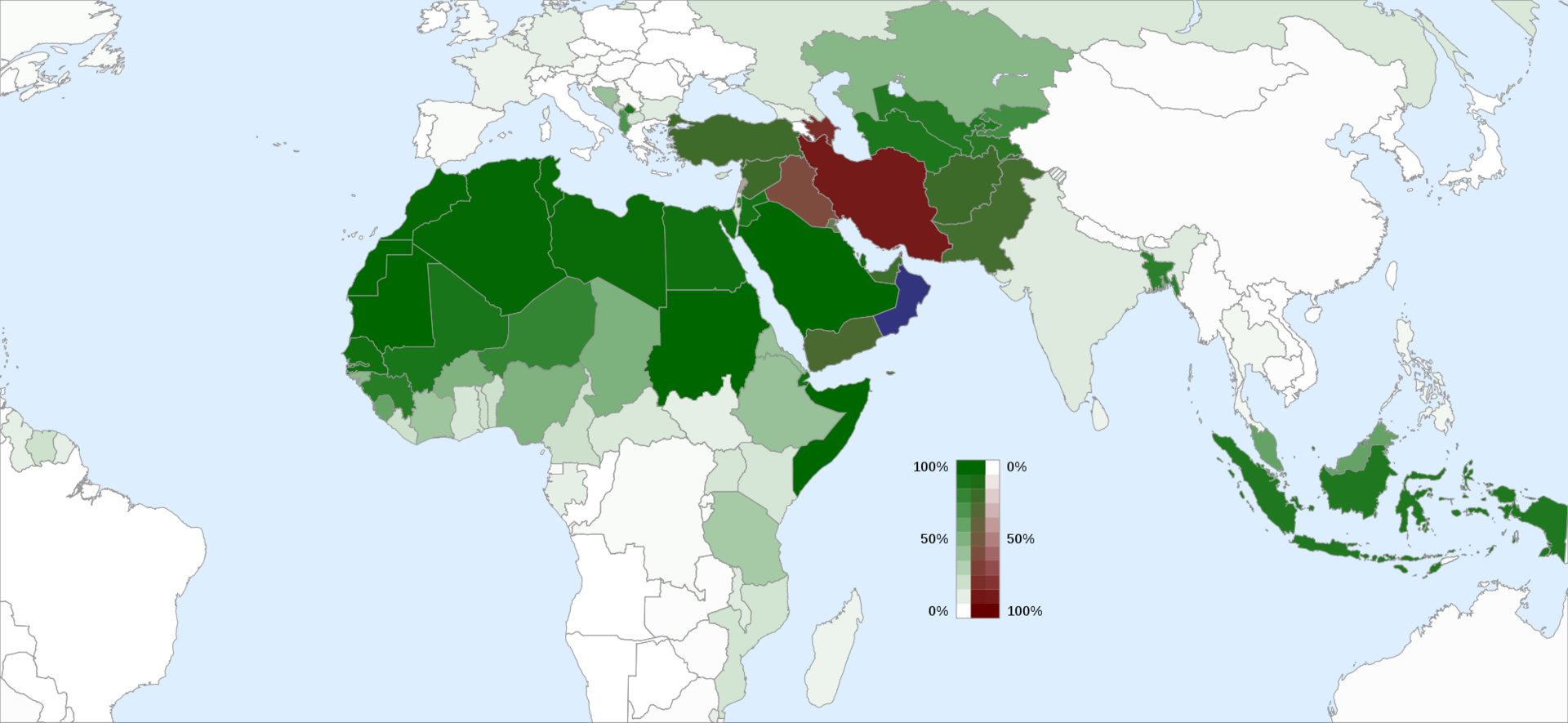Sunni, Shia, Sufi, Salafist, Wahhabi: What’s The Difference?
“Al-Haram mosque – Flickr – Al Jazeera English” by Al Jazeera English – Al-Haram mosque. Licensed under CC BY-SA 2.0 via Wikimedia Commons.
You will be familiar with the terms Sunni, Shia, Sufi, Salafist and Wahhabi, but unsure what they mean.
Here, we provide a basic summary. It’s not exhaustive — each group has their own rich history, some of which predates Muhammad — but it will provide a basic introduction.
Sunni, Shia, Sufi, Salafist, and Wahhabi are all part of the Muslim faith, Islam. Each has a slightly different take on the religion. Some of these intergroup differences aren’t huge, while some are large enough to inspire wars.
Sunni Islam
“Selimiye Camii ve Mavi Gökyüzü” by Ahmet Baris ISITAN – Own work. Licensed under CC BY-SA 3.0 via Wikimedia Commons.
Sunni Islam is the second largest religious body after Christianity. Sunnis make up 75–90% of all Muslims.
Sunni is often referred to as the orthodox version of Islam. The word Sunni is thought to come from the Arabic word Sunnah, which refers to the sayings and actions of Muhammad.
Sunnis are a majority in most Muslim communities: in Southeast Asia, China, South Asia, Africa, and most of the Arab world.
Greens are Sunni, red are Shia:
“Islam by country“. Licensed under CC BY-SA 3.0 via Wikimedia Commons.
Shia Islam
Shia Islam is the second largest denomination of Islam. To explain where the term Shia was born will involve explaining why Shia and Sunni parted ways in the first place.
When Muhammad died in 632 AD, he left his followers with a problem: Who should take over the reigns of this swiftly growing religion?
There were two schools of thought, some believed Muhammad’s cousin, Ali had been ordained by Muhammad and should be next in line. Others thought there should be a democratic consensus, and that Muhammad’s father-in-law Abu Bakr should be the next leader.
Shi’a is the short form of the historic phrase Shī’atu ‘Alī meaning followers, or party of, Muhammad’s son-in-law and cousin, Ali.
Shia Muslims are the majority in Iran, Iraq, Bahrain, Azerbaijan and, according to some estimates, Yemen.
There are also large Shia communities in Afghanistan, India, Kuwait, Lebanon, Pakistan, Qatar, Syria, Turkey, Saudi Arabia, and the UAE.
The discrepancy in the leadership discussions split Shia and Sunni permanently. Although Sunni and Shia often live side by side and even intermarry in some countries, they remain two separate entities.
The Shia have an Imamate, headed up by the Imam. He fulfills a prophetic function and is considered almost God-like, imbued with some of Muhammad’s spiritual powers.
The Sunni’s have a Caliphate, headed up by a Caliph. The Caliphs are elected and not considered spiritual beings.
Note: Caliph/Imam and Sunni/Shia are similar to Priest/Vicar and Catholic/Protestant.
Sufi Islam
“Roof hafez tomb” by Pentocelo – Own work. Licensed under CC BY 3.0 via Wikimedia Commons.
Sufism is considered Islam’s mystical branch. Rather than a sect, it’s more of a dimension of Islam, so there are Sufi orders within Shia and Sunni groups.
Some Sufis contest that Sufism is built purely on the tenets of Islam, while others believe its philosophical approach predates Muhammad but has slowly become entwined with Islam.
Classical Sufi scholars have defined Sufism as:
“…a science whose objective is the reparation of the heart and turning it away from all else but God.”
Sufis meet for spiritual sessions in zawiyahs, khanqahs, or tekke, rather than mosques.
Although Sufi are small in number, their focus on learning has influenced Islamic thought across the generations.
Salafist / Wahhabi
Salafists are ultra-conservative followers of Islam. Proponents believe they are living as close to Muhammad’s original teachings as possible.
The name Salafist is increasingly often followed by the term Jihadist. Their hardline approach to Islam is popular with those who wish to take lives in the name of their God.
In reality, the Jihadist section is a tiny minority, with most Salafists focusing on non-violent evangelism and teaching. According to some, Salafism is the fastest growing Islamic contingent in the world.
For the sake of maintaining the simplicity of this list, we can refer to Salafism and Wahhabi as a merged concept as their ideals overlap in large parts. Some use the term Salafism interchangeably with Wahhabism, but to a Salafist, this is considered derogatory.
Currently there are an estimated 50 million Salafists world wide.
As mentioned, this was by no means an exhaustive list of Muslim groups, but those are the ones that appear in the media the most, so they’re worthy of our attention.
READ NEXT:
A SMALL DEBATE WITH AN ISLAMOPHOBE
IRAQ’S ENDANGERED MINARET OF JAM
























